Neuropilin-1 promotes the oncogenic Tenascin-C/integrin β3 pathway and modulates chemoresistance in breast cancer cells
- PMID: 29728077
- PMCID: PMC5935908
- DOI: 10.1186/s12885-018-4446-y
Neuropilin-1 promotes the oncogenic Tenascin-C/integrin β3 pathway and modulates chemoresistance in breast cancer cells
Abstract
Background: Neuropilin-1 (NRP-1), a non-tyrosine kinase glycoprotein receptor, is associated with poor prognosis breast cancer, however transcriptomic changes triggered by NRP-1 overexpression and its association with chemoresistance in breast cancer have not yet been explored.
Methods: BT-474 NRP-1 variant cells were generated by stable overexpression of NRP-1 in the BT-474 breast cancer cell line. RNA sequencing and qRT-PCR were conducted to identify differentially expressed genes. The role of an upregulated oncogene, Tenascin C (TNC) and its associated pathway was investigated by siRNA-mediated knockdown. Resistant variants of the control and BT-474 NRP-1 cells were generated by sequential treatment with four cycles of Adriamycin/Cyclophosphamide (4xAC) followed by four cycles of Paclitaxel (4xAC + 4xPAC).
Results: NRP-1 overexpression increased cellular tumorigenic behavior. RNA sequencing identified upregulation of an oncogene, Tenascin-C (TNC) and downregulation of several tumor suppressors in BT-474 NRP-1 cells. Additionally, protein analysis indicated activation of the TNC-associated integrin β3 (ITGB3) pathway via focal adhesion kinase (FAK), Akt (Ser473) and nuclear factor kappa B (NF-kB) p65. siRNA-mediated TNC knockdown ablated the migratory capacity of BT-474 NRP-1 cells and inactivated FAK/Akt473 signaling. NRP-1 overexpressing cells downregulated breast cancer resistance protein (BCRP/ABCG2). Consequently, sequential treatment with Adriamycin/Cyclophosphamide (AC) cytotoxic drugs to generate resistant cells indicated that BT-474 NRP-1 cells increased sensitivity to treatment by inactivating NRP-1/ITGB3/FAK/Akt/NF-kB p65 signaling compared to wild-type BT-474 resistant cells.
Conclusions: We thus report a novel mechanism correlating high baseline NRP-1 with upregulated TNC/ITGB3 signaling, but decreased ABCG2 expression, which sensitizes BT-474 NRP-1 cells to Adriamycin/Cyclophosphamide. The study emphasizes on the targetability of the NRP-1/ITGB3 axis and its potential as a predictive biomarker for chemotherapy response.
Keywords: ABCG2; Adriamycin; Breast cancer; Chemoresistance; Cyclophosphamide; Integrin beta 3; NRP-1; TNC.
Conflict of interest statement
Ethics approval and consent to participate
Not applicable.
Competing interests
The authors declare that they have no competing interests.
Publisher’s Note
Springer Nature remains neutral with regard to jurisdictional claims in published maps and institutional affiliations.
Figures
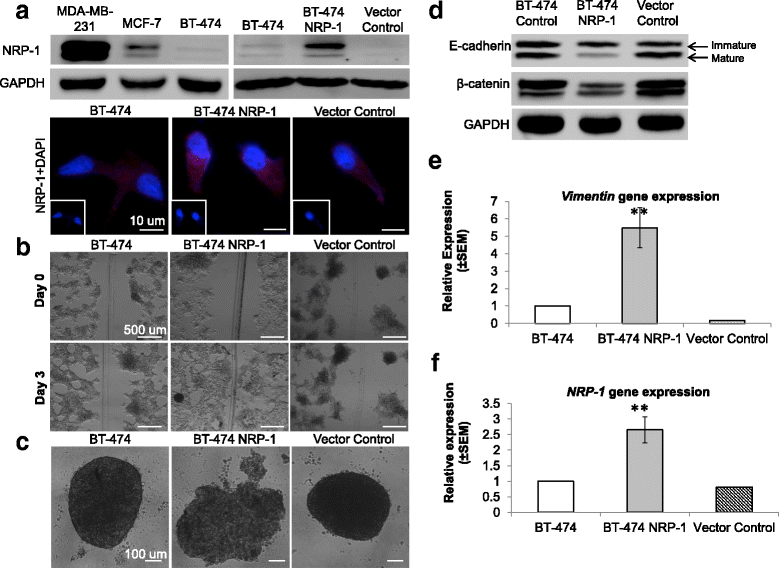
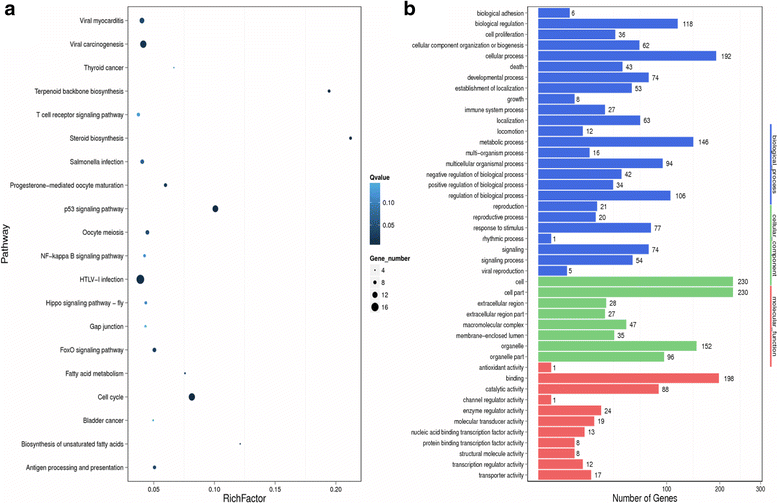
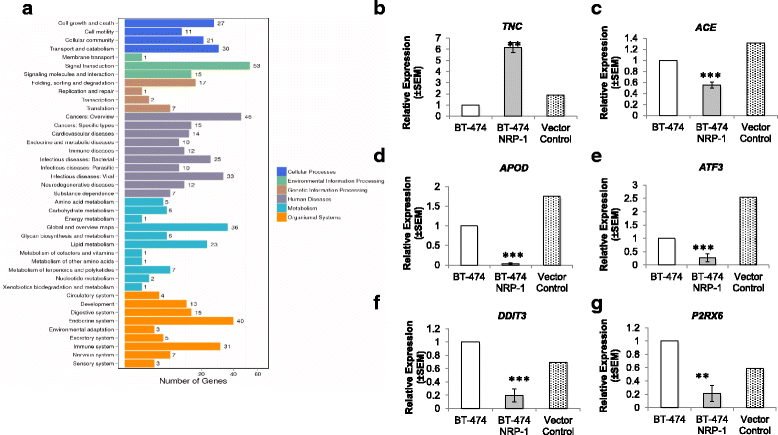
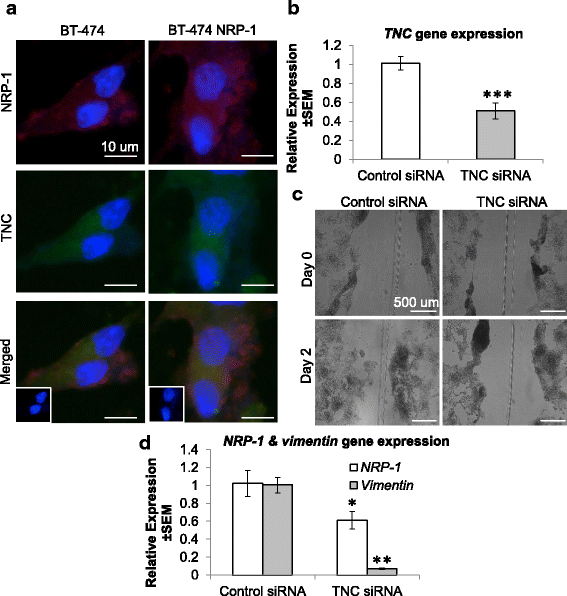
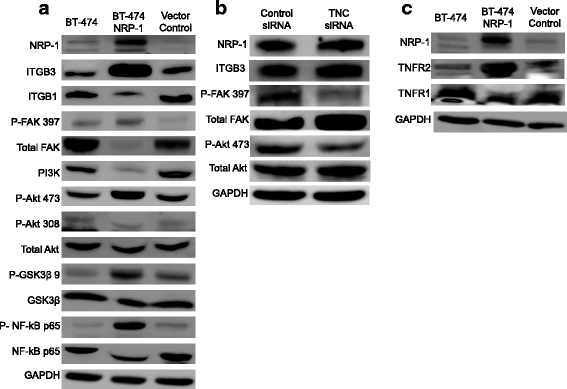
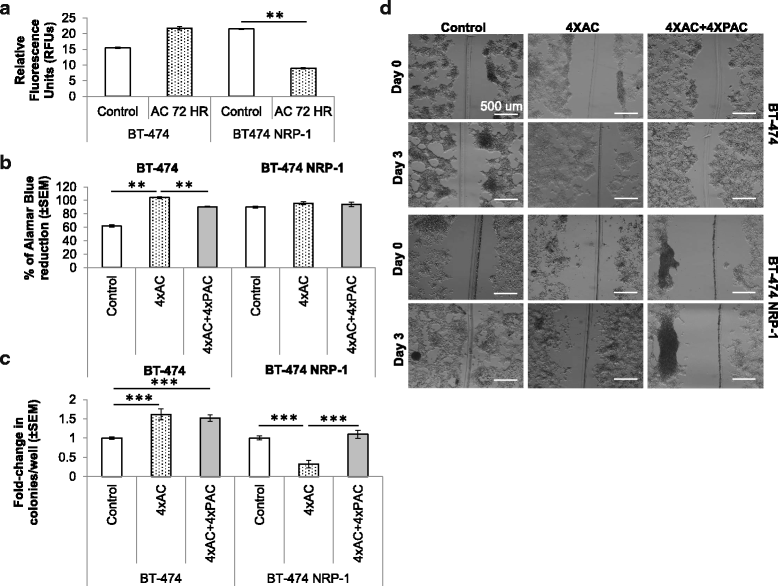
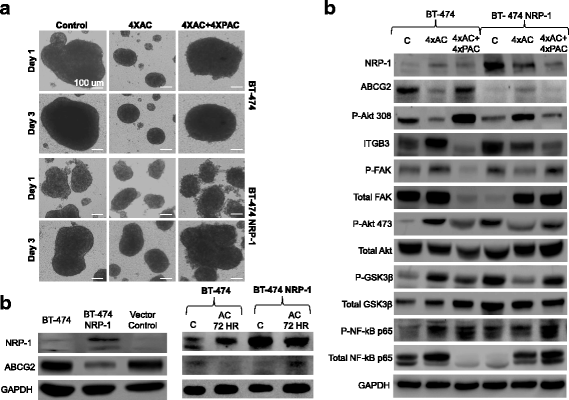
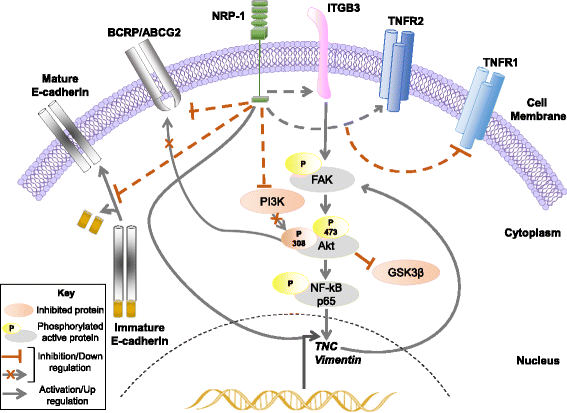
Similar articles
-
Modeling Neoadjuvant chemotherapy resistance in vitro increased NRP-1 and HER2 expression and converted MCF7 breast cancer subtype.Br J Pharmacol. 2020 May;177(9):2024-2041. doi: 10.1111/bph.14966. Epub 2020 Feb 15. Br J Pharmacol. 2020. PMID: 31883395 Free PMC article.
-
GPER mediates decreased chemosensitivity via regulation of ABCG2 expression and localization in tamoxifen-resistant breast cancer cells.Mol Cell Endocrinol. 2020 Apr 15;506:110762. doi: 10.1016/j.mce.2020.110762. Epub 2020 Feb 19. Mol Cell Endocrinol. 2020. PMID: 32087276
-
Up-regulation of breast cancer resistance protein plays a role in HER2-mediated chemoresistance through PI3K/Akt and nuclear factor-kappa B signaling pathways in MCF7 breast cancer cells.Acta Biochim Biophys Sin (Shanghai). 2011 Aug;43(8):647-53. doi: 10.1093/abbs/gmr050. Epub 2011 Jun 28. Acta Biochim Biophys Sin (Shanghai). 2011. PMID: 21712253
-
Expression of tenascin-C and its isoforms in the breast.Cancer Metastasis Rev. 2010 Dec;29(4):595-606. doi: 10.1007/s10555-010-9249-9. Cancer Metastasis Rev. 2010. PMID: 20814719 Review.
-
Tenascin-C in Heart Diseases-The Role of Inflammation.Int J Mol Sci. 2021 May 29;22(11):5828. doi: 10.3390/ijms22115828. Int J Mol Sci. 2021. PMID: 34072423 Free PMC article. Review.
Cited by
-
Potential Mechanism Underlying the Role of Mitochondria in Breast Cancer Drug Resistance and Its Related Treatment Prospects.Front Oncol. 2021 Mar 18;11:629614. doi: 10.3389/fonc.2021.629614. eCollection 2021. Front Oncol. 2021. PMID: 33816265 Free PMC article. Review.
-
Integrin β3 Promotes Resistance to EGFR-TKI in Non-Small-Cell Lung Cancer by Upregulating AXL through the YAP Pathway.Cells. 2022 Jun 30;11(13):2078. doi: 10.3390/cells11132078. Cells. 2022. PMID: 35805163 Free PMC article.
-
Extracellular Matrix in the Tumor Microenvironment and Its Impact on Cancer Therapy.Front Mol Biosci. 2020 Jan 31;6:160. doi: 10.3389/fmolb.2019.00160. eCollection 2019. Front Mol Biosci. 2020. PMID: 32118030 Free PMC article. Review.
-
Long noncoding RNA RP11-70C1.3 confers chemoresistance of breast cancer cells through miR-6736-3p/NRP-1 axis.Bosn J Basic Med Sci. 2022 Feb 1;22(1):87-99. doi: 10.17305/bjbms.2021.5803. Bosn J Basic Med Sci. 2022. PMID: 34374639 Free PMC article.
-
miR-218 affects the ECM composition and cell biomechanical properties of glioblastoma cells.J Cell Mol Med. 2022 Jul;26(14):3913-3930. doi: 10.1111/jcmm.17428. Epub 2022 Jun 15. J Cell Mol Med. 2022. PMID: 35702951 Free PMC article.
References
-
- Adham SA, Al Harrasi I, Al Haddabi I, Al Rashdi A, Al Sinawi S, Al Maniri A, Ba-Omar T, Coomber BL. Immunohistological insight into the correlation between neuropilin-1 and epithelial-mesenchymal transition markers in epithelial ovarian cancer. J Histochem Cytochem. 2014;62(9):619–631. doi: 10.1369/0022155414538821. - DOI - PubMed
-
- Naik A, Al-Zeheimi N, Bakheit CS, Al Riyami M, Al Jarrah A, Al Moundhri MS, Al Habsi Z, Basheer M, Adham SA. Neuropilin-1 associated molecules in the blood distinguish poor prognosis breast Cancer: a cross-sectional study. Sci Rep. 2017;7(1):3301. doi: 10.1038/s41598-017-03280-0. - DOI - PMC - PubMed
MeSH terms
Substances
Grants and funding
LinkOut - more resources
Full Text Sources
Other Literature Sources
Medical
Molecular Biology Databases
Miscellaneous

